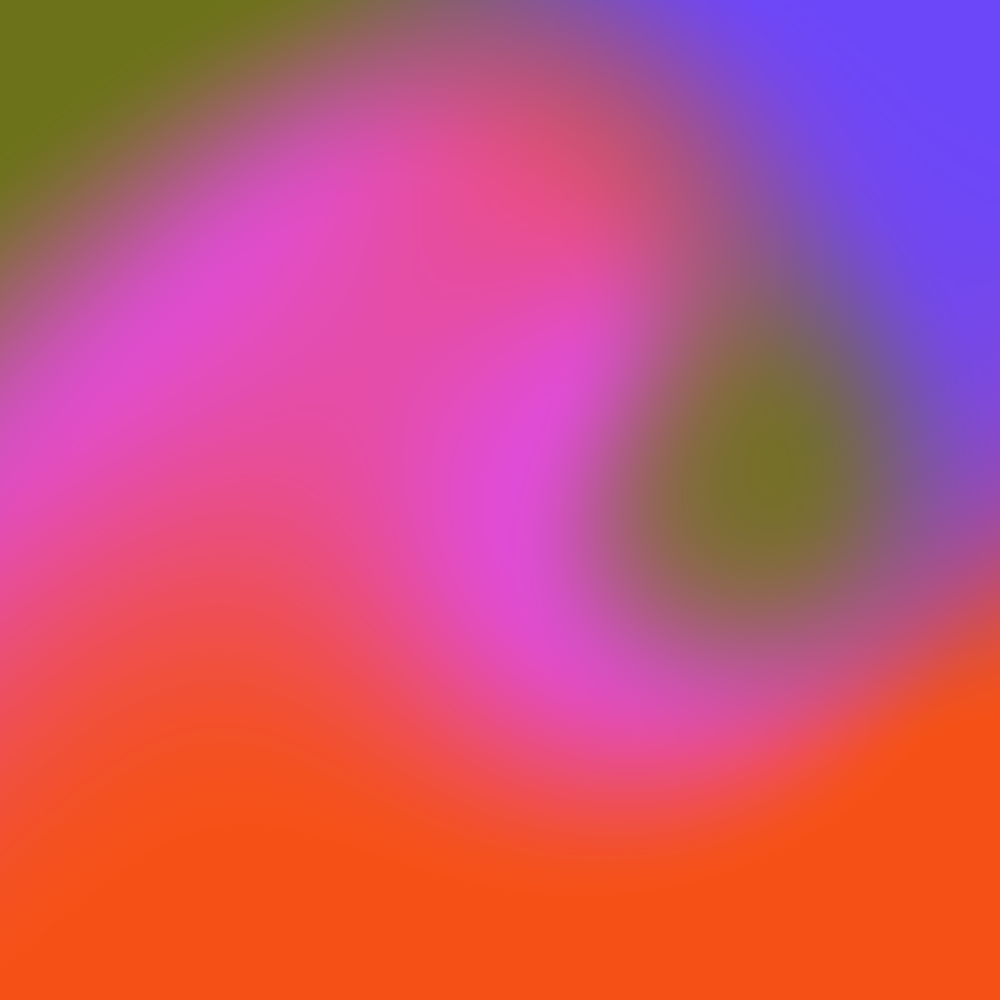Creativity is a spiritual practice: A week-by-week synopsis of how The Artist's Way changed my life and helped me work through burnout
This isn't my first rodeo #
I started reading The Artist's Way in July 2021. This post will be a detailed report of my experience working through the twelve-week program.
This is my second time reading The Artist's Way. The first was late 2019 through early 2020 (I finished right before lockdowns in my city), as I was working through a year-long period of burnout.
The first time was enlightening for sure. But this second time has been life-changing. I mostly attribute the difference to two big life changes:
- I started attending weekly therapy sessions earlier this year.
- I quit the job that was making me feel burned out, and have fully adjusted to working remotely, which means no more 3 hour commute!
"Getting unstuck" or "unblocked" is one of the aims of The Artist's Way, and I can say that these two life changes gave me the momentum I needed to re-devote myself to my creative practice.
Perhaps reading the book the first time around was a catalyst for some of these big changes? If that's the case, I recommend you start now, do the twelve-week program, let it all marinate, and return to it again in a year or two. Unblocking your inner artist is a process—it likely won't happen all at once. There will be "Creative U-Turns."
In working with this book, remember that The Artist's Way is a spiral path. You will circle through some of the issues over and over, each time at a different level. There is no such thing as being done with an artistic life. Frustrations and rewards exist at all levels on the path. Our aim here is to find the trail, establish our footing, and begin the climb. The creative vistas that open will quickly excite you.
The first time reading The Artist's Way prepared me for the second time, where I felt real transformation in my beliefs and my body.
"The basic principles of The Artist’s Way" by teacher, author, writer, poet, and playwright Julia Cameron #
Cameron introduces these ten basic principles in the first few pages of The Artist's Way. You'll see the word God throughout these principles, a word that may or may not resonate with you. Cameron encourages us to think of our creativity as a spiritual practice, and to get curious about the spiritual electricity that we manifest when we're creating. Feel free to replace "God" with whatever word resonates most for you: Source, Spirit, Creative Force, The Great Creator, Benevolent Universe, Goddess, etc.
Creativity is the natural order of life. Life is energy: pure creative energy.
There is an underlying, in-dwelling creative force infusing all of life--including ourselves.
When we open ourselves to our creativity, we open ourselves to the creator’s creativity within us and our lives.
We are, ourselves, creations. And we, in turn, are meant to continue creativity by being creative ourselves.
Creativity is God’s gift to us. Using our creativity is our gift back to God.
The refusal to be creative is self-will and is counter to our true nature.
When we open ourselves to exploring our creativity, we open ourselves to God: good orderly direction.
As we open our creative channel to the creator, many gentle though powerful changes are to be expected.
It is safe to open ourselves up to greater and greater creativity.
Our creative dreams and yearnings come from a divine source. As we move toward our dreams, we move toward our divinity.
The basic tools #
The two main practices of The Artist's Way program are (1) Morning Pages, daily three pages of free-form writing, and (2) Artist Dates, weekly fun and inspirational solo outings.
When I first read The Artist's Way in 2019 I was strict about completing these daily and weekly tasks. This time around, I was more lenient.
How I do Morning Pages #
Toward the beginning of the book, weeks one through four, I did my Morning Pages some days, but almost never in the morning. Mostly because it doesn't work with my schedule. I start working pretty immediately after waking (my team is on East Coast time) and then finish around 3 PM. After that is when I'd write my pages.
I do think Morning Pages are something you should experiment with if you've never tried them before. I tend to alternate among different mediums. Sometimes I write in a physical notebook, or I pay $5 per month for 750words.com, or I use a Notion list.
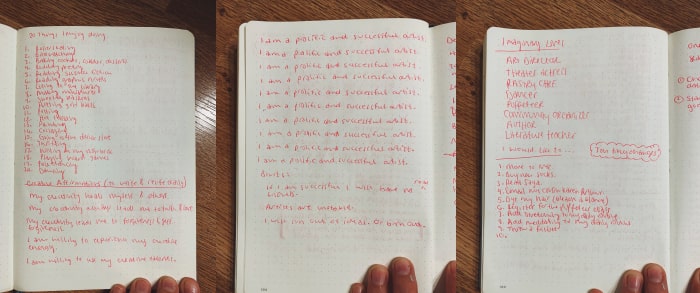
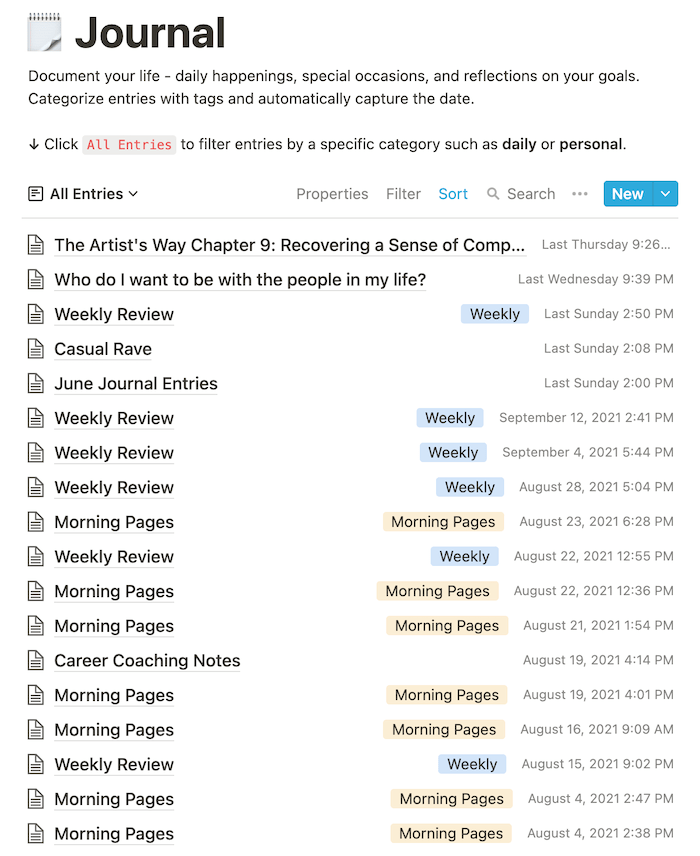
I'm not strict about Morning Pages because I struggle to blabber on for 750 words without wanting to work on something I'm excited about, which is the goal of the pages anyway!
Sometimes in the pages I'll think up ideas to write in a blog post or newsletter, so whenever I'm blocked or depressed or frustrated I do find myself turning to a blank page and writing three pages stream-of-consciousness-style.
Lately, I've been doing more artistic journaling, and that has somewhat replaced my Morning Pages practice.
How I do Artist Dates #
My Artist Dates have been more sporadic than I'd like, but in general these have become part of my creative practice since 2019. I love hanging out alone! It does take a bit of planning ahead for me to make these dates happen, but I've come to really enjoy treating myself in this way.
Most often my Artist Dates include a simple walk to a coffee shop where I sit and read a book for an hour or so. That's it. Super simple. No fuss. So much joy.
This summer I took myself on a date to the zoo and made a short video about it:
Week 1: Recovering a sense of safety #
This week focused on uncovering my core negative beliefs and dissolving them through positive affirmations. I admit, I felt a little jaded reading this chapter and working through the exercises.
I know I have a horribly mean inner critic, but why do I have to write down all of the mean things she says to me!?
I've been blocked for so long. What's different about this time? How are these positive affirmations going to help me make art?
I felt resistance. Sometimes, affirmations feel hokey.
When I wrote down an affirmation, I found the voice of my inner critic, or Censor, chiming in with objections.
I wrote them anyway.
- I am a brilliant and prolific artist.
- I am destined to be a successful artist.
- My creativity inspires people.
- My creativity changes the world.
New beginnings #
In addition to starting The Artist's Way program this week, I started a new job. This was a big deal since my previous job was contributing to a lingering sense of burnout that I just couldn't shake. The new job is remote, only 35 hours a week, and not nearly as stressful.
I also had an introductory call with a career coach, someone who I hoped could help me navigate some of my artistic blocks. The consultation went well and I booked a series of coaching sessions.
Week 2: Recovering a sense of identity #
This week's chapter focused on the ways in which healing my inner artist will inevitably result in big and small changes to my personal identity. I explored some of the roadblocks I may encounter and how to navigate them.
The main culprits:
-
Poisonous playmates, or, the people in my life who are themselves blocked artists. My recovery is threatening to these people.
Be very careful to safeguard your newly recovering artist. Often, creativity is blocked by our falling in love with other people's plans for us. We want to set aside time for our creative work, but we feel we should do something else instead. As blocked creatives, we focus not on our responsibilities to ourselves, but on our responsibilities to others. We tend to think such behavior makes us good people. It doesn't. It makes us frustrated people.
I admit I think I've let a few poisonous playmates keep me blocked in the past. Setting boundaries is hard, but this piece of encouragement keeps me moving through my artistic recovery:
Soon enough, the techniques you learn will enable you to teach others. Soon enough, you will be a bridge that will allow others to cross over from self-doubt into self-expression. For right now, protect your artist by refusing to show your morning pages to interested bystanders or to share your artist date with friends. Draw a sacred circle around your recovery. Give yourself the gift of faith. Trust that you are on the right track. You are.
-
Crazymakers, or, the people in my life who expect special treatment, discount my reality, spend my time and money, create drama, destroy schedules, and, most importantly, deny that they are crazymakers. Basically, these people are narcissists, and allowing them space in my life is ultimately self-destructive.
If you are involved now with a crazymaker, it is very important that you admit this fact. Admit that you are being used—and admit that you are using your own abuser. Your crazymaker is a block you chose yourself, to deter you from your own trajectory. As much as you are being exploited by your crazymaker, you, too are using that person to block your creative flow.
Crazymakers are my kryptonite, unfortunately. It's taken a lot of therapy to help me recover from my codependence. The good news is that I'm healing and have made giant leaps of progress in setting boundaries that protect my energy. I highly recommend looking at your relationships with this lens to prepare for real artistic recovery.
-
Skepticism, or, my inner secret doubt that is keeping me from trusting the recovery process. It's hard to admit that, perhaps, the universe is paying attention to my recovery, and giving small cues that I'm on the right path.
Now that we are in creative recovery, there is another approach we need to try. To do this, we gently set aside our skepticism—for later use, if we need it—and when a weird idea or coincidence whizzes by, we gently nudge the door a little further open.
More than anything else, creative recovery is an exercise in open-mindedness. Again, picture your mind as that room with the door slightly ajar. Nudging the door open a bit more is what makes for open-mindedness. Begin, this week, to consciously practice opening your mind.
-
Addiction to fantasy, or, not paying attention to right here and now.
Very often, a creative block manifests itself as an addiction to fantasy. Rather than working or living the now, we spin our wheels and indulge in daydreams of could have, would have, should have. One of the great misconceptions about the artistic life is that it entails great swathes of aimlessness. The truth is that a creative life involves great swathes of attention. Attention is a way to connect and survive.
This was perhaps my favorite part of the week two chapter. I love the idea of paying attention as an antidote to all the worrying and future proofing.
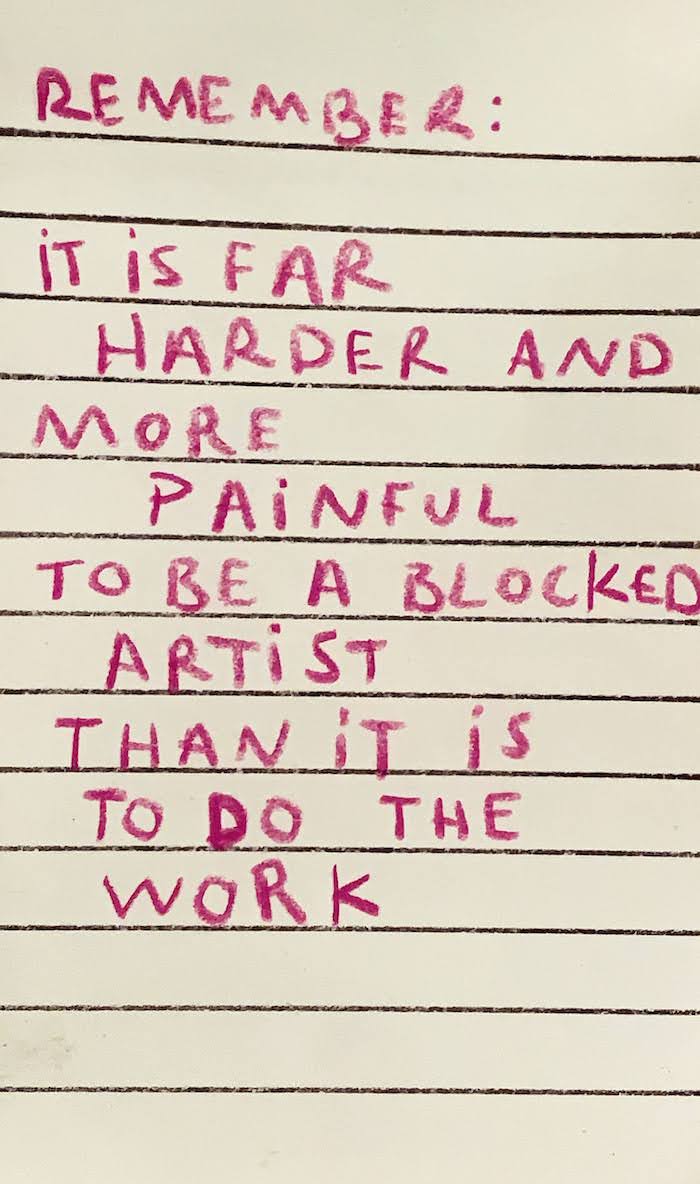
New places, new perspectives #
This week I visited my good friend in Seattle—my first time traveling since March 2020. We danced, attended a wedding, and went whale watching.
Being in a different environment is always a little uncomfortable for me. As an introvert and homebody, I thrive on routine. But there is such thing as too much routine that lends to me feeling stuck.
As expected, the time away was refreshing. I think it jumpstarted a few changes that didn't fully come to fruition until weeks four or five. Proof that good things take time.
Week 3: Recovering a sense of power #
This week provides tips and resources for dealing with anger, shame, synchronicity, criticism, and growth. Below are some of my favorite quotes from the chapter:
-
Anger
Sloth, apathy, and despair are the enemy. Anger is not. Anger is our friend. Not a nice friend. Not a gentle friend. But a very, very loyal friend. It will always tell us when we have been betrayed. It will always tell us when we have betrayed ourselves. It will always tell us that it is time to act in our own best interests.
Anger is not the action itself. It is action's invitation.
-
Synchronicity
We like to pretend it is hard to follow our heart's dreams. The truth is, it is difficult to avoid walking through the many doors that will open. Turn aside your dream and it will come back to you again. Get willing to follow it again and a second mysterious door will swing open.
-
Shame
Making a piece of art may feel a lot like telling a family secret. Secret telling, by its very nature, involves shame and fear. It asks the question "What will they think of me once they know this?" This is a frightening question, particularly if we have ever been made to feel ashamed for our curiosities and explorations—social, sexual, spiritual.
Setting a boundary #
I remember this week being busy due to an event I was planning. Even though the event was fun and celebratory, I don't think it came at a good time for my artistic recovery. I found the process stressful and it left little time or energy for creative work. Since learning this about myself, I've set a boundary, where I'm not organizing events for a while. Instead, I'm opting for smaller, more intimate opportunities to connect with friends. Like baking a batch of cinnammon rolls and inviting one or two friends over to share.
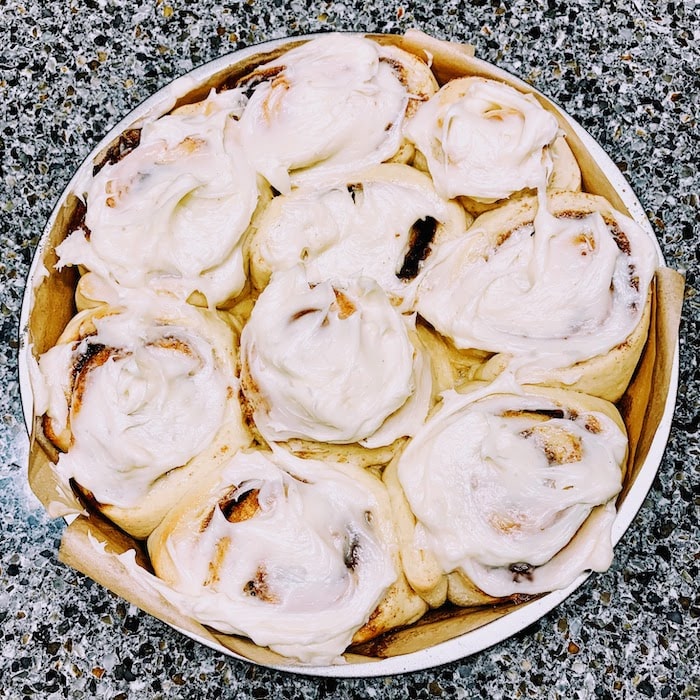
Week 4: Recovering a sense of integrity #
The process of identifying a self inevitably involves loss as well as gain. We discover our boundaries, and those boundaries by definition separate us from our fellows. As we clarify our perceptions, we lose our misconceptions. As we eliminate ambiguity, we lose illusion as well. We arrive at clarity, and clarity creates changes.
The life changing magic of getting the f*** out of the house #
I met with my career coach for the first time this week, and as homework I was tasked with keeping a small promise to myself every day for two weeks. The promise I made was simple: Every day at 3:30 PM, walk to a nearby coffee shop.
Looking back now, the birth of this habit arguably changed everything for my artistic recovery. For the first time in a long time, I was keeping a promise with myself, and it felt amazing.
At home, I was completing little tasks that I'd left undone for months. Sending an email. Going to the post office. Donating clothes to secondhand shops. Posting furniture on Craigslist and pocketing a little extra cash.
The crazy part is that Cameron predicted this shift would happen this week:
When the search-and-discard impulse seizes you, two crosscurrents are at work: the old you is leaving and grieving, while the new you celebrates and grows strong. As with any rupture, there is both tension and relief. Long-seated depression breaks up like an ice floe. Long-frozen feelings that, melt, cascade, flood, and often overrun their container (you). You may find yourself feeling volatile and changeable. You are.
I also started attending pole fitness classes, which has become another creative outlet. Getting my body moving in a new and challenging environment has definitely improved my mood.
Pole thread. My goal is to take 100 classes and track progress. This is class number 2! pic.twitter.com/1QF5ZKoiSN
— Sam Andrews (8/100 pieces of art) (@samandrewsmakes) August 22, 2021
Overall, the theme of this week for me was momentum. I felt a shift in my energy. Things coming together.
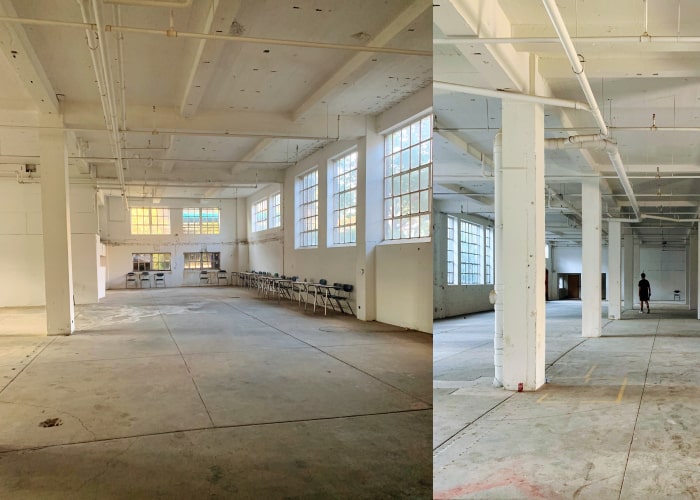
Week 5: Recovering a sense of possibility #
The question "Are you self-destructive?" is asked so frequently that we seldom hear it accurately. What it means is Are you destructive of your self? And what that really asks us is Are you destructive of your true nature?
This prompt stuck with me in week five. I realized that I can be very destructive of my true nature, but not in the ways you'd expect. I don't get drunk and ruin relationships. I exercise. I eat healthy (for the most part). I show up for work with a positive and collaborative attitude.
But I do say yes to commitments out of responsibility, rather than enthusiasm.
I run errands on an empty stomach and then get an inevitable grumpy headache.
I scroll TikTok, Instagram, Twitter in a seemingly endless loop instead of getting my beauty sleep.
I don't keep promises to myself to write or make art.
Most of my self-destructive tendencies look like me not taking care of myself. But it took asking the question, "am I destructive of my true nature?" to understand that not taking care of even my smallest needs is an act of abandonment. And I decided this week to stop abandoning myself.
Practically speaking, this means I started thinking of myself as a small child who desperately needs someone to look after her basic needs.
Do I need a snack before I run errands? Use the bathroom? Bring a water bottle? Put my phone away before getting ready before bed? Leave blank space in my schedule every day for making art?
Before this week, I thought I was above all of the "self care" nonsense. Just grow up and get it done, I told myself.
By my inner child needs someone who cares. She needs adult me to be a supportive and loving presence in her life. She needs nurturing.
A few additional quotes I liked:
We strive to be good, to be nice, to be helpful, to be unselfish. We want to be generous, of service, of the world. But what we really want is to be left alone. When we can't get others to leave us alone, we eventually abandon ourselves. To others, we may look like we're there. We may act like we're there. But our true self has gone to ground.
What's left is a shell of our whole self. It stays because it is caught. Like a listless circus animal prodded into performing, it does its tricks. It goes through its routine. It earns its applause. But all of the hoopla falls on deaf ears. We are dead to it. Our life is now an out-of-body experience. We're gone.
Being myself on the internet #
This month I started posting more earnestly on Twitter. This might not seem like a big deal, but I've always struggled to "be myself" on the internet, and I felt a push to start experimenting with opening the door to my artistic recovery with online friends. Instead of trying to be clever or funny, I decided to post more of my more authentic thoughts and ideas.
- Open a makerspace / art studio / cafe that's open late so people can make art all night long
— Sam Andrews (8/100 pieces of art) (@samandrewsmakes) August 25, 2021
- Also offer a lot of free tech classes there, Girls Who Code, etc.
- Travel the world with my partner & friends
- Buy a cool house and decorate it with wallpaper & trinkets https://t.co/63TUEEqu4c
the point pic.twitter.com/XCsYyivrRa
— Sam Andrews (8/100 pieces of art) (@samandrewsmakes) August 31, 2021
A thread I wrote about the power of taking small steps:
i've been seriously underestimating the power of consistent daily efforts paired with an unwavering devotion to a much bigger creative vision for the future
— Sam Andrews (8/100 pieces of art) (@samandrewsmakes) September 23, 2021
feels like i've found a cheat code for life
How to create an Artist's Way image file #
One of the tasks this week was to start an image file, a place to save photos that inspire big dreams
I chose to create mine in Pinterest. I named the board "Dreams" and regularly save fashion, art, and nature images to it.
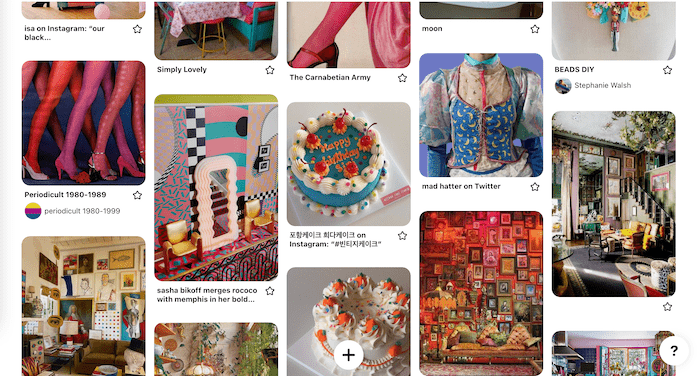
Week 6: Recovering a sense of abundance #
In order to thrive as artists—and, one could argue, as people—we need to be available to the universal flow. When we put a stopper on our capacity for joy by anorectically declining the small gifts of life, we turn aside the larger gifts as well.
The focus for this week was money, a topic that I've actually always welcomed. One of the exercises involved writing down all of my expenses for the week. Truth be told, I already do this. I review and tally up every single expense each month and record how much I'm spending in a Notion spreadsheet. I find this kind of counting therapeutic and comforting.
But my favorite part of this chapter is when Cameron talks about luxury. What does luxury mean to me? What brings me true joy? It's not as expensive as I thought.
A few years ago I started turning the handle on those little twenty-five cent machines you find at bowling alleys and outside grocery stores. For only a few quarters I experience the same anticipation and excitement I felt as a kid on the rare occasion my mom would lend me some change.
For me, twenty-five cent machines are a luxury.
Buying a cookie on my walk to the coffee shop is a luxury.
Half & half in my coffee is a luxury.
Going to the movies on a Monday evening is a luxury.
What we are talking about when we discuss luxury is very often a shift in consciousness more than flow—although as we acknowledge and invite what feels luxurious to us, we may indeed trigger an increased flow.
Creative living requires the luxury of time, which we carve out for ourselves—even if it's fifteen minutes for quick morning pages and a ten-minute minibath after work.
Creative living requires the luxury of space for ourselves, even if all we manage to carve out one special bookshelf and a windowsill that is ours.
I found myself collecting items that felt luxurious this week. A piece of citrine and pressed flowers.
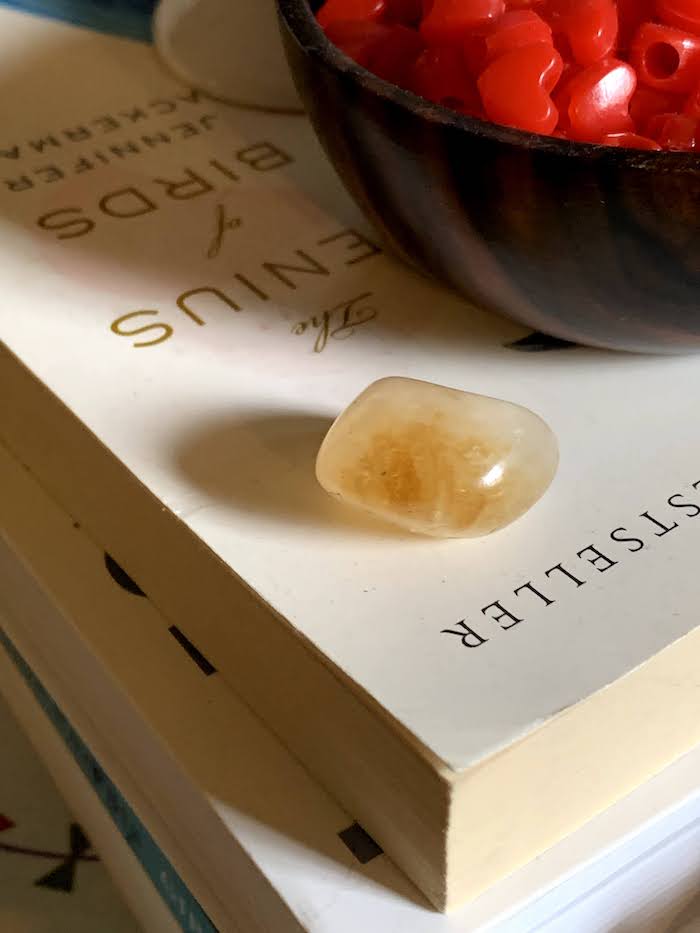
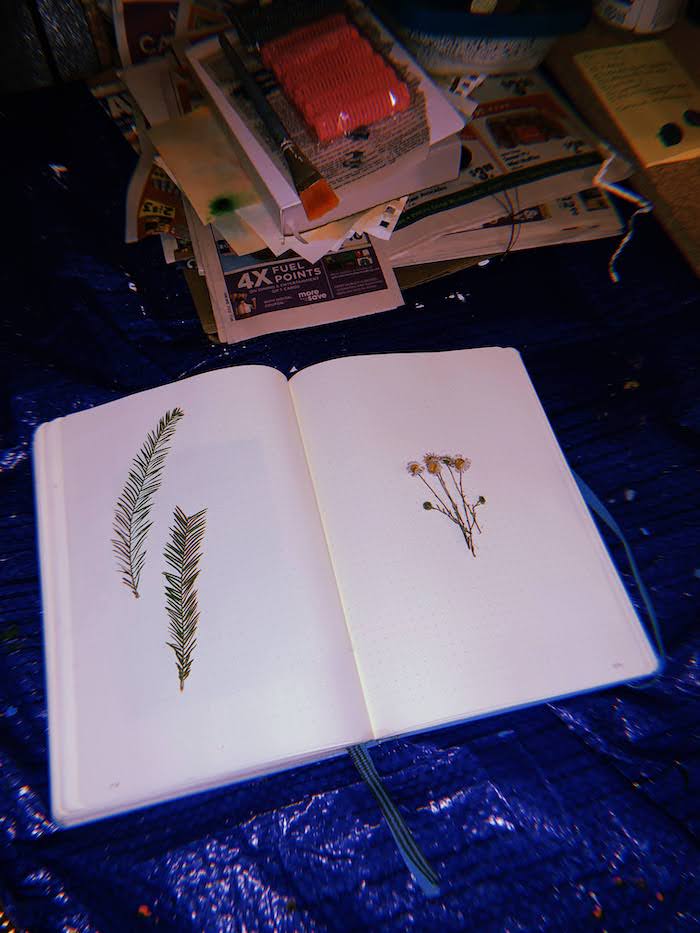
And I wore a luxurious outfit to the coffee shop! Iconic, no?!
Same energy pic.twitter.com/HAC0h3dZGK
— Sam Andrews (8/100 pieces of art) (@samandrewsmakes) September 4, 2021
Building momentum #
This week I tabled at the Art Walk, a monthly street fair where artists sell their work. I have a small vintage suitcase full of some older prints and stickers, and I leapt out of my comfort zone by sharing these pieces with the world.
I didn't sell much, but I didn't mind. I wasn't trying to get rich, I was trying to put myself out there. To call myself an artist. To prove to myself that I can be brave.
This was also the week I worked on a painting and submitted it to a local art studio for their yearly festival poster design. I'm new to acrylic painting, and I struggle to fully execute the vision I have in my head, but I enjoyed the process as I created this piece, and that seems like a very good sign!
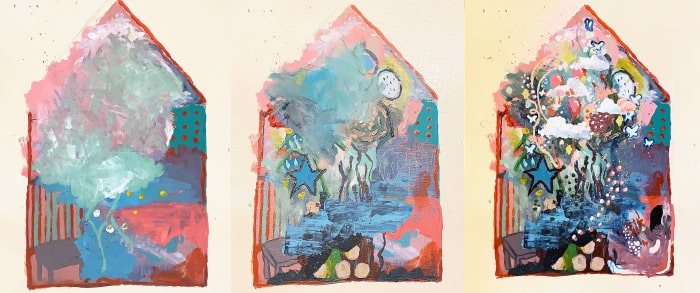
Week 7: Recovering a sense of connection #
This week's chapter focused on cultivating the attitudes necessary for receiving creative flow. I especially liked Cameron's description of art as "getting something down" rather than "thinking something up." As artists in-tune with the world around us, we shouldn't need to strain to reach for something that's just beyond our grasp. When we get something down, there is no strain. She continues:
Art is an act of tuning in and dropping down the well. It is as though all the stories, painting, music, performances in the world live just under the surface of our normal consciousness. Like an underground river, they flow through us as a stream of ideas that we can tap down into. As artists, we drop down the well into the stream. We hear what's down there and we act on it—more like taking dictation than anything fancy having to do with art.
This perspective takes all the pressure off from my creative practice. I don't have to worry about coming up with interesting or innovatitve ideas, I just have to pay attention.
My favorite ways to pay attention are...
- Birdwatching
- Art journaling
- Leisurely nature walks
- Leaving my phone at home
- Painting
- Taking photos
Tending the digital garden #
This week, I started writing blog posts and making small changes to this website. Writing has always been part of my creative practice, but I've struggled to make it a consistent habit. My daily outings to the coffee shop have carved out time to make writing a ritual, and I'm relishing it instead of rushing the process. Small consistent efforts are the goal.
I make changes to my website like a gardener tends to her garden. Slow, tinkering, and allowing space for delight. My website is where I like to connect with you, so it felt natural to spend more time here as I work through artistic recovery.
I also re-committed myself to sending my weekly newsletter, Soft Practice, which is my favorite place to share weekly updates about what I’ve learned about growing a creative practice.
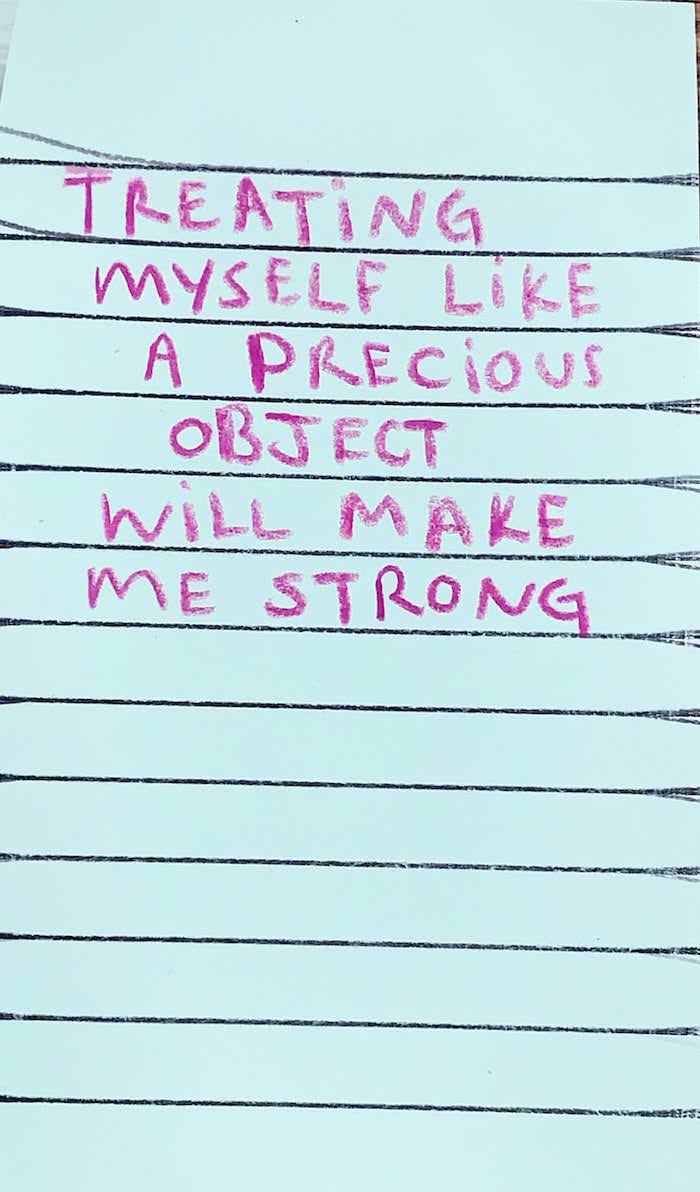
Listened to this album on repeat this week:
And took some cute selfies:
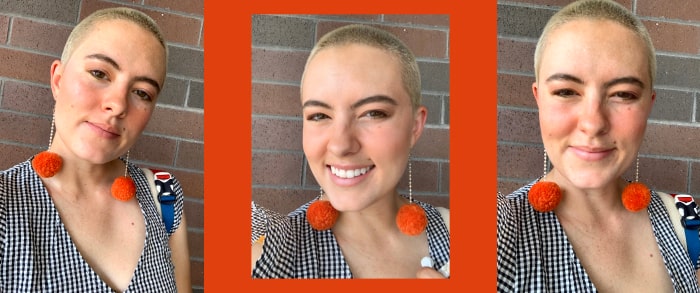
Week 8: Recovering a sense of strength #
I felt really inspired this week by Cameron's lessons about age, time, small steps, and doing "the next right thing."
In the past I've gotten stuck by a limiting belief — that it's too late to get started because everyone else is already way ahead of me:
As blocked creatives, we like to pretend that a year or even several years is a long, long time. Our ego plays this little trick to keep us from getting started. Instead of allowing ourselves a creative journey, we focus on the length of the trip. "It's such a long way," we tell ourselves. It may be, but each day is just one more day with some motion in it, and that motion toward a goal is very enjoyable.
— and a sabatoging behavior — looking too far into the future instead of taking small steps toward my dream:
Indulging ourselves in a frantic fantasy of what our life would look like if we were real artists, we fail to see the many small creative changes that we could make this very moment. This kind of look-at-the-big-picture thinking ignores the fact that a creative life is grounded on many, many small steps and very, very few large steps.
Both of these blocks are rooted in fear and anxiety. Interestingly, both are solved by the same seemingly simple behavior change: taking the next small step, doing the next right thing. Cameron calls this process of taking the small next step "filling the form."
Whenever I am willing to ask "What is necessary next?" I have moved ahead. Whenever I have taken no for a final answer I have stalled and gotten stuck. I have learned that the key to career resiliency is self-empowerment and choice.
Most of the time, the next right thing is something small: washing out your paintbrushes, stopping by the art-supply store and getting your clay, checking the local paper for a list of acting classes... As a rule of thumb, it is best to just admit that there is always one action you can take for your creativity daily. This daily-action commitment fills the form.
Take one small daily action instead of indulging in the big questions. When we allow ourselves to wallow in the big questions, we fail to find the small answers. What we are talking about here is a concept of change grounded in respect—respect for where we are as well as where we wish to go. We are looking not to grand strokes of change—although they may come—but instead to the act of creatively husbanding all that is in the present: this job, this house, this relationship.
Doing the next right thing has become a favorite phrase of mine, so much so that I created a sticker with the phrase. Soon you'll be able to buy your own on my Etsy shop.
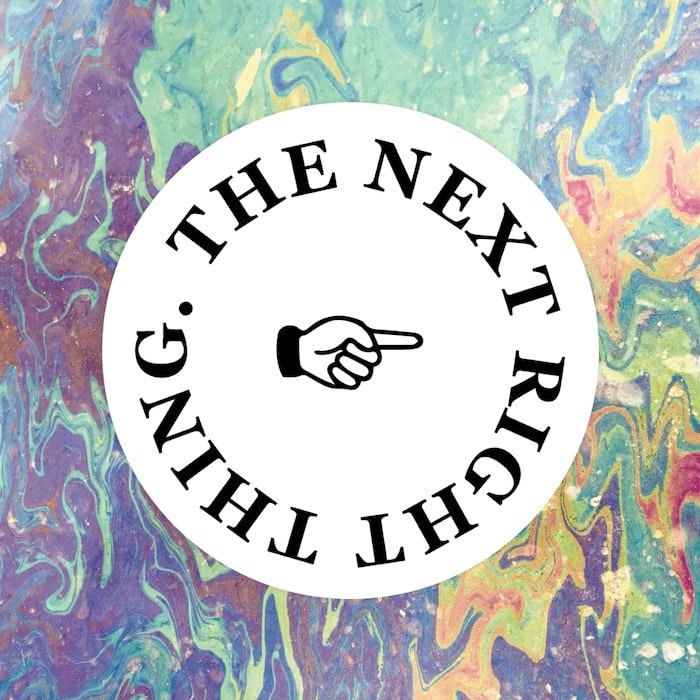
Articulating my dream #
One of the exercises for this week (and probably my favorite exercise thus far) involved writing down my big creative dreams. I loved this exercise so much I felt inspired to collate some of my additional favorite prompts for creative visioning.
The prompt #
List your dream. List it’s true north. Select a role model. Make an action plan. Five years. Three years. One year. One month. One week. Now. Choose an action.
My dream #
I want to be an artist. I want to encourage others to take the next right action, to practice, and to focus their time and energy on what they want to see more of. I want to elevate human consciousness through the simple act of making. My role model is Sister Corita Kent. In five years (2026), I want my own art studio and I want to show my work in a collaborative art show with other artists.
Small signals and synchronicity #
Remember that painting I mentioned in week 7? Well, it was selected as the official piece for the Off Center Arts 2021 poster design! I submitted on a whim, after noticing the call for submissions on one of my daily walks. Along with a cash prize, I also get to attend the celebratory festival in November and talk to community members about my art practice.
I submitted this piece to @OFFCenterARTS poster contest and it won 😊 Really really wasn't expecting it, which makes it even more exciting. https://t.co/dbLYs3uPyo
— Sam Andrews (8/100 pieces of art) (@samandrewsmakes) September 16, 2021
Week 9: Recovering a sense of compassion #
One of this week's exercises involved writing a detailed description of the dream I articulated in week eight. This is what I wrote:
My creative vision #
I am an artist. I am in my art studio working on a painting. It's a big room with all sorts of supplies for printmaking, papier-mâché, and arts and crafts. Creative chaos. The sun pours in through big windows. There's hardly a corner not dripping in warmth and light. There are other artists in the building and sometimes we drink tea together and have dinner parties. I am surrounded by prints, sculptures, and multi-media pieces that I've created. I am making good money from my art practice—a combination of selling my work online, workshops, YouTube, and commissions. People resonate with my authenticity and my process. I'm writing a book. Later, I'll go to the public library to work on it. Pole fitness has kept me strong and active. I feel beautiful. Radiant even. Short blonde hair, big earrings, and bright lipstick framing the smile lines around my eyes. There is so much opportunity. So much joy. So much love.
Even more signals and synchronicity #
This week I experienced more synchronicity and signals that I’m on the right path. I had a fun exchange with writer and freelancer Paul Millerd of Boundless on Twitter, and I received an email from an artist-technologist and creator of the Ratchelor, Caroline Hermans. These little interactions gave me a boost of creative energy. It seemed that online at least, I’m attracting the friendly and ambitious friends I’ve always dreamed about.
This was also the week of my third career coaching session, where I started asking myself, “Who do I want to be with the people in my life?”
You see, I have always had a hard time calling myself an artist or talking about my creative practice among friends and family. This inability to share my most authentic self with the people I love is deeply rooted in fear, as Cameron notes:
Fear is the true name for what ails the blocked artist. It may be fear of failure or fear of success. Most frequently, it is fear of abandonment. This fear has roots in childhood reality. Most blocked artists tried to become artists against either their parents' good wishes or their parents' good judgement. For a youngster this is quite a conflict.
To move past this fear, I started experimenting with letting my authentic self shine. I shared some of my pole practice on Instagram. I didn’t drink at a party and still made friends. I said no to activities that didn’t sound fun and yes to ones that did.
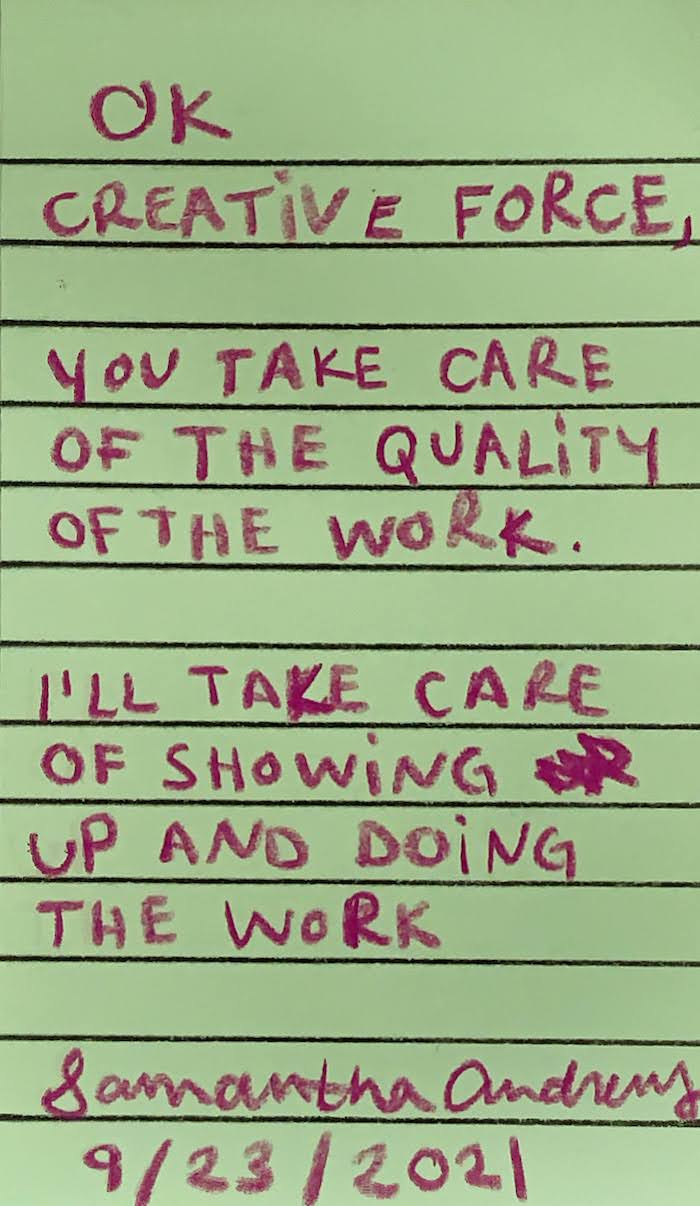
Cameron suggests "choosing an artist totem" and honoring it by not beating up on our artist child. I chose this tiny plastic octopus.
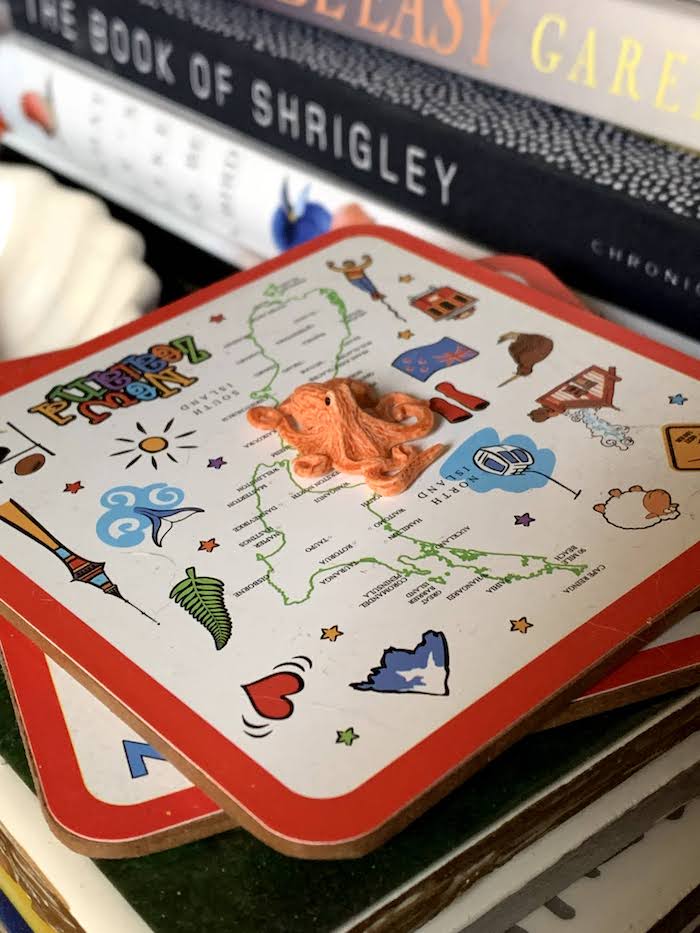
Week 10: Recovering a sense of self-protection #
This week I experienced my very first energy healing / reiki session as recommended by my therapist. I still find myself skeptical of energy work, but I enjoyed the session. I left feeling lighter, more whole, and much more balanced. I learned a few techniques to help protect my energy, one being a visualization to protect myself in white light.
This protection meditation fit right into this week's chapter, which was all about setting boundaries. Cameron lists a few "dangers of the trail" that we may encounter throughout our recovery.
Knowing yourself as an artist means acknowledging which of these you abuse when you want to block yourself. If creativity is like a burst of the universe's breath through the straw that is each of us, we pinch that straw whenever we pick up one of our blocks.
Dangers of the trail #
-
Food, sugar, alcohol, drugs, sex - These ones are pretty self explanatory. Substances and behaviors that, if abused, can block creative flow.
-
Workaholism - Another addiction that blocks creative energy.
There is a difference between zestful work toward a cherished goal and workaholism. That difference lies less in the hours than it does in the emotional quality of the hours spent. There is a treadmill quality to workaholism. We depend on our addiction and we resent it.
-
Drought - The times in our life when we are full of doubt and dried up emotions. Everything feels pointless. To move through a drought, and there is no other way than through, we must trust that it will end, and keep showing up to the page.
In a creative life, droughts are a necessity. The time in the desert brings us clarity and charity. When you are in a drought, know that it is to a purpose. And keep writing morning pages.
-
Fame - A distraction from the work itself. With some success we start to fear that we need to hold onto our power and prestige. The solution is to show ourself love through small, concrete actions and to "pick up the tools of your work and begin to do just a little creative play."
-
Competition - A poison that impedes our own progress. The antidote is to trust ourselves and to show up to do the work.
As artists, we cannot afford to think about who is getting ahead of us and how they don't deserve it. The desire to be better than can choke off the simple desire to be. As artists we cannot afford this thinking. It leads us away from our own voices and choices and into a defensive game that centers outside of ourselves and our sphere of influence. It asks us to define our own creativity in terms of someone else's.
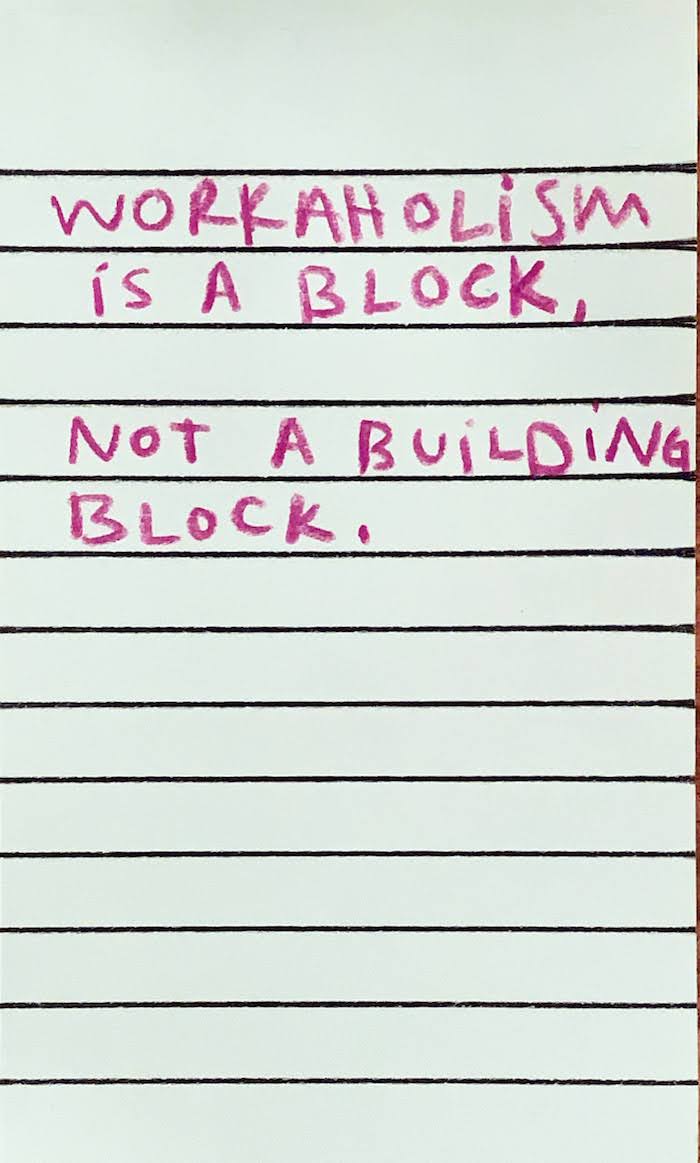
Personally I struggle with workaholism, which became clear to me this year when I felt mentally and emotionally fragmented. Something was off balance, and that something was me neglecting to nurture my creative practice in any meaningful way. Luckily I found this balance through my 35 hour work week and daily coffee shop walks where I spend time nurturing creative projects.
I'm learning to balance the left and right sides of brain, and the result has been an overall feeling of wholeness.
Week 11: Recovering a sense of autonomy #
This week I made the decision to take a break from social media for an undetermined period of time.
Why logoff now? #
There's only three months left in the year, and I want to make these months count. I felt myself spending way too much time scrolling social media, and intuitively knew it was time to come back to myself. A return to center, as Marlee Grace would call it.
In these final months of the year I plan to focus on building my creative practice. I want to paint everyday (or most days), pay attention to the world around me, and make plans for the new year.
I also had my fourth and final career coaching session, a bittersweet see-you-later. The support I received from my coach was a big reason why I felt so transformed in these few months. Through this experience I've realized that I thrive when working through problems with a team of supportive people. My therapist and career coach have provided that support and I'm grateful for it.
One of my favorite quotes from this chapter:
As an artist, I write whether I think it's any good or not. I shoot movies other people may hate. I sketch bad sketches to say, "I was in this room. I was happy. It was May and I was meeting somebody I wanted to meet."
Week 12: Recovering a sense of faith #
This week, the week of the final chapter, I spent in northern New Mexico. The aspens were changing—bursts of orange, red, and pale yellow among pockets of evergreens. Transformation is everywhere. It's all part of the natural rhythm.
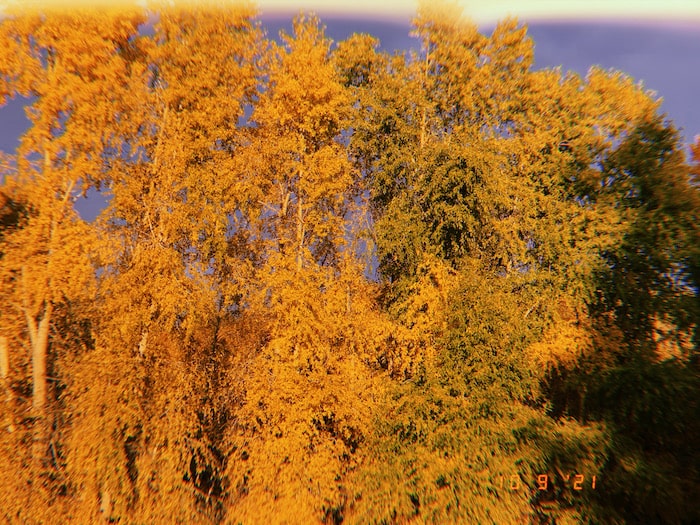
I too am part of that rhythm. And even though my transformation has felt unsettling (it's scary to change parts of your identity), I am reminded of my connection with the seasons and the moon and the stars.
One of the exercises this week was described as follows:
Select a God jar. A what? A jar, a box, a vase, a container. Something to put your fears, your resentments, your hopes, your dreams, your worries into.
Here's mine:
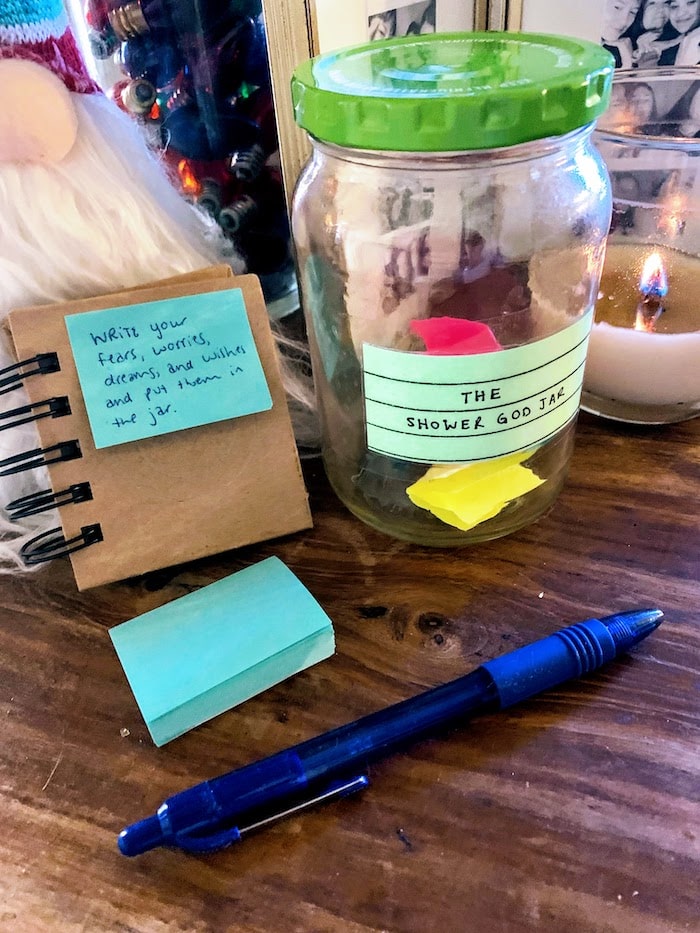
The shower god is something my partner made up, and I admit I too find the shower a place for prayer and magical thinking. So we offer up our hopes and fears to the shower god, and trust they are listenting.
Use your God jar. Start with your fear list. When worried, remind yourself it's in the jar—"God's got it." Then take the next action.
Final thoughts #
These past twelve weeks I practiced returning to myself. Picking up the fragments, gathering energy leaks. Remembering what embodied joy feels like. Making promises—to no longer abandon myself, to nurture my inner artist, to stay grounded in daily ritual. And taking small steps toward my dream.
Ultimately, these past twelve weeks were a spiritual journey toward becoming whole.
The plan is to keep going. To keep building my creative practice and sharing the process here. Watch this space for more creative magic ✨
Subscribe to Soft Practice—An email newsletter for artists and makers
Soft Practice is about making art without an art degree, paying attention, and keeping the promises we make to ourselves. It's about practice. And quitting. And starting again.
It arrives in your inbox once a month (usually on a Sunday) and is best consumed with a hot beverage. In each newsletter I will share all the messy parts along my journey to becoming a full-time artist and maker, help you get organized to better manage your creative projects, and offer up some thoughtful (and sometimes weird) recommendations.
